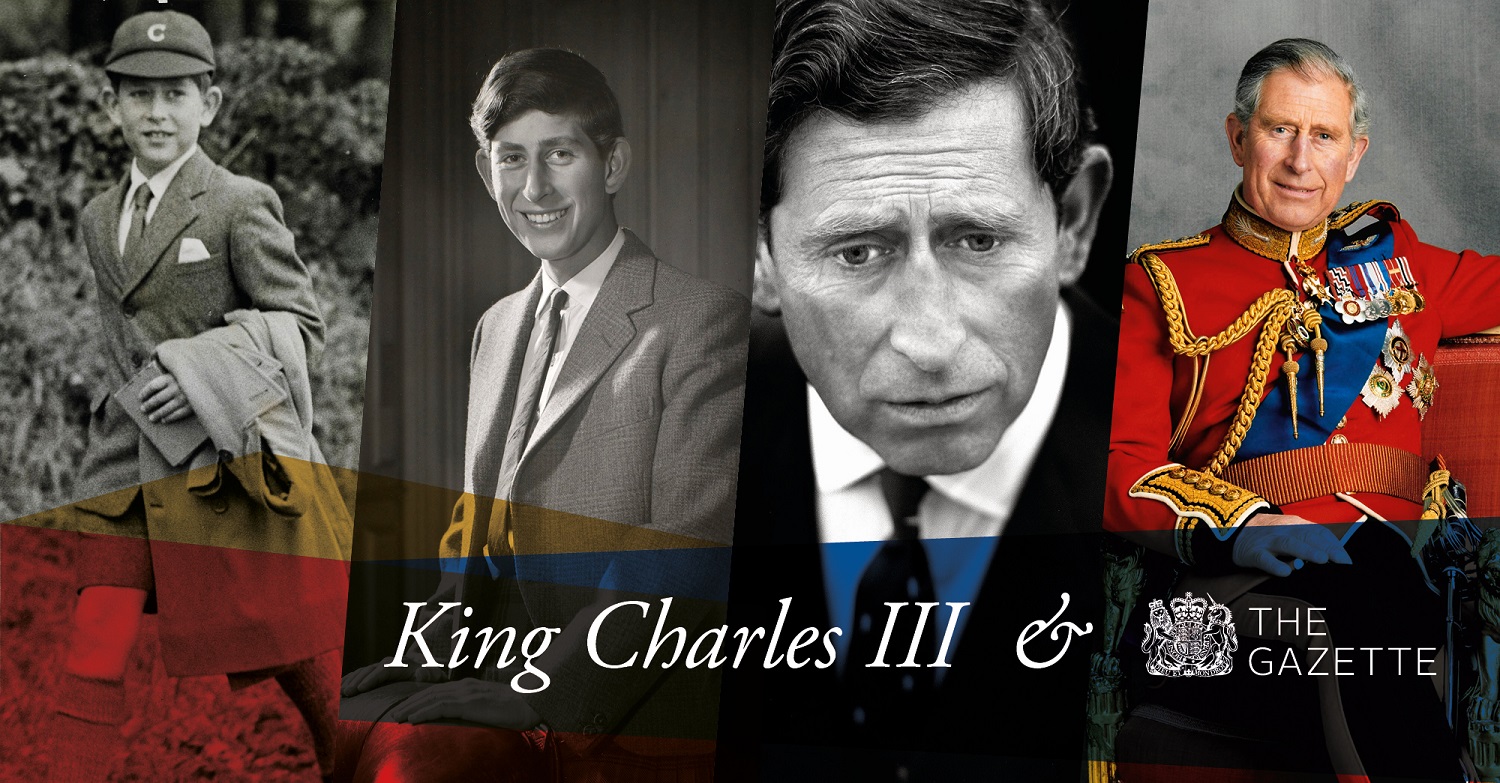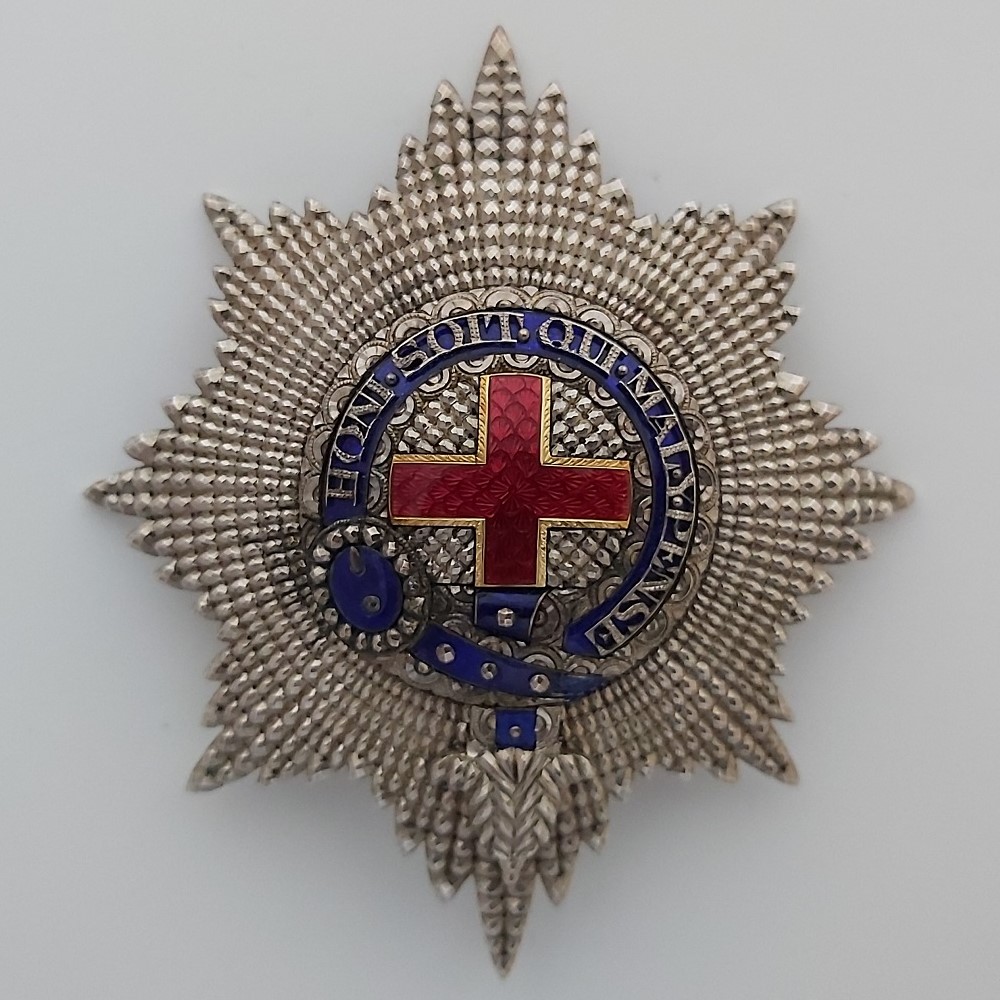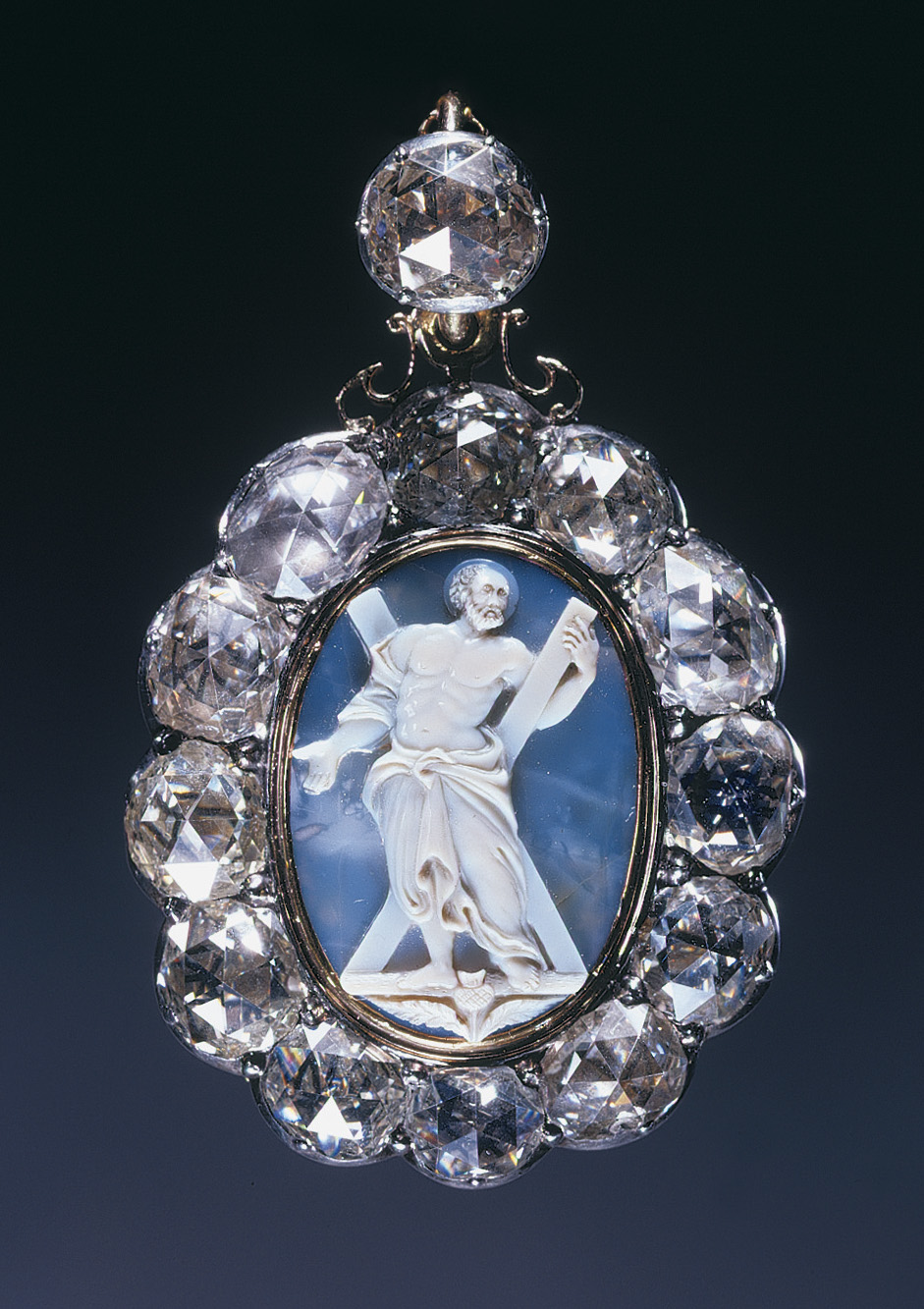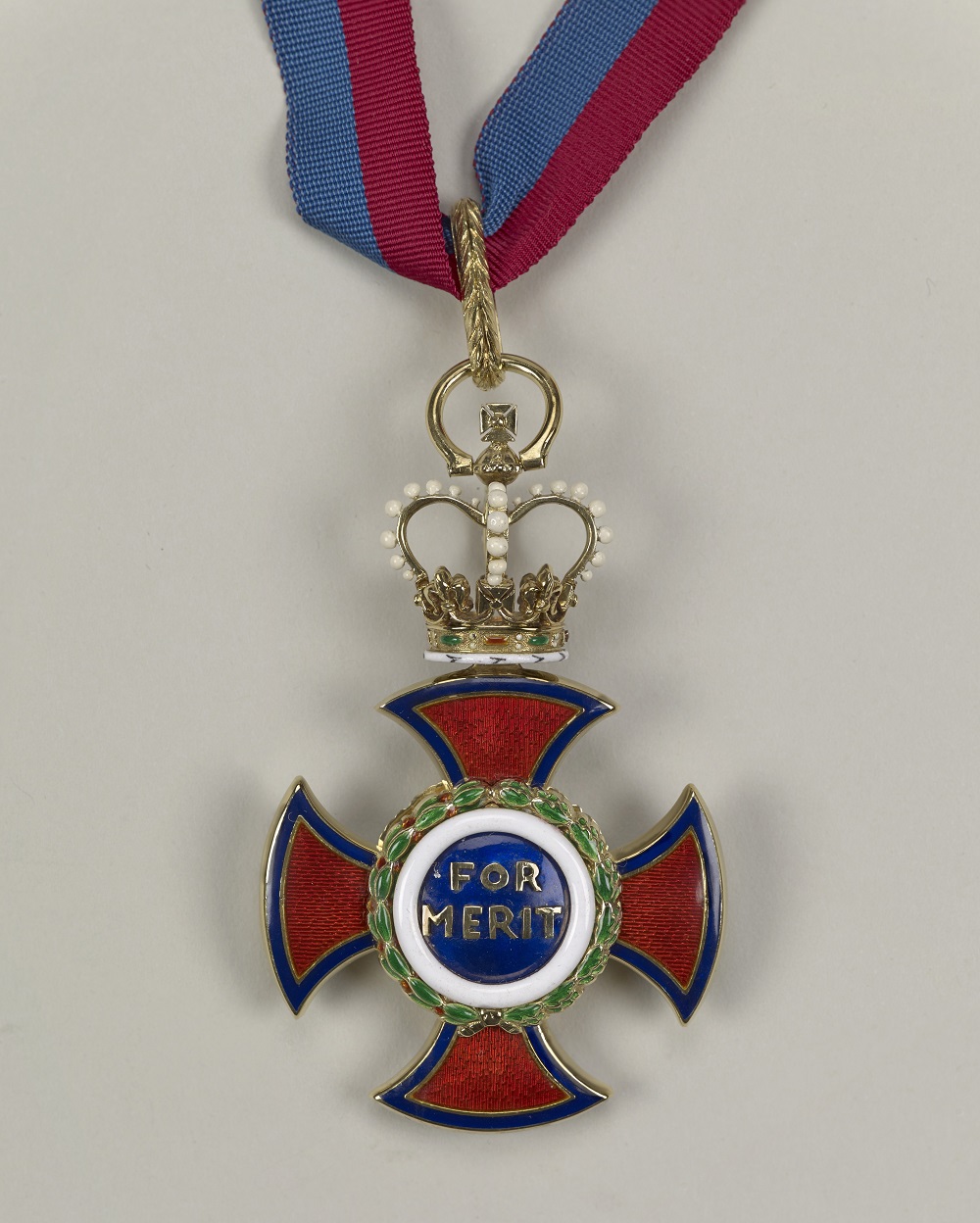King Charles III and The Gazette: Knight of the Garter

Ahead of the coronation due to take place on Saturday 6 May 2023, historian Russell Malloch examines aspects of the new King’s life that have left a record in The Gazette. In this chapter, we look at Charles III’s relationship with the orders of the Garter, Bath, Thistle, and Merit.
Chapters

Order of the Garter
Even although Prince Charles was referred to as a “Knight of Our Most Noble Order of the Garter” in the letters patent which made him a counsellor of state for the first time in June 1967, he had not yet received the honour of knighthood, or been invested with any of the Garter’s insignia.
The wording of the patent reflected the fact that the Queen’s son had automatically become a member of the order when he was made prince of Wales in July 1958, but because he was only 9 years old at the time it was decided to postpone his investiture for a decade. Although, some of the royal companions from the Stuart and Hanoverian eras had received the order’s insignia during their childhood.
The Gazette did not record the fact that Prince Charles joined the Garter in 1958, as his membership was linked to the grant of the dignity of prince of Wales under a Garter statute of January 1805, which declared that the order should consist of the sovereign and 25 companions, together with such lineal descendants of King George II as may be elected “always excepting the prince of Wales, who is a constituent part of the original institution.”
The nature of the special link between the principality and the Garter before and after the 1805 statute was illustrated by The Gazette announcing the grant of the Welsh dignity to the future George IV in 1762, but no knighthood of the Garter until 1765 (Gazette issue 10586). There was then no separate Gazette notice about the riband being given to the future kings Edward VII and Edward VIII who became princes of Wales and “automatic” knights of the Garter in 1841 and 1910 respectively.
Four princes from the time of the first Gazette in the 17th century received the Garter before the Welsh title, starting with George, Duke of Cambridge (George II) who received his knighthood in 1706 and the principality in 1714, and ending with Prince George (George V) who was admitted to the Garter 17 years before he became prince of Wales in 1901.
Investiture
Prince Charles was eventually knighted and invested in the Throne Room at Windsor Castle on 17 June 1968, in the presence of the members of the Order of the Garter, including the former prime minister Anthony Eden, and wartime commanders such as Field-Marshals Alexander of Tunis and Montgomery of Alamein. He was conducted to his stall in St George’s Chapel on the same day, and a plate bearing his coat of arms was set up beside similar heraldic memorials to other holders of the Welsh dignity who later became sovereign, including the princes who were transformed into kings as George IV in 1820, Edward VII in 1901, and Edward VIII in 1936.
Prince Charles’s Garter plate showed his arms with the central Welsh shield, and the inscription Charles Prince de Galles MCMLVIII between two of his principal badges, the coroneted feathers and Ichdien motto, and the red dragon of Wales.
The prince attended more than 30 Garter chapters at Windsor Castle between 1968 and 2022 when his wife Camilla, Duchess of Cornwall, received her blue riband. The knights who were introduced during that period included four British prime ministers, starting with Harold Wilson in 1976 (Gazette issue 46885) and ending with Tony Blair in 2022 (Gazette issue 63581).
It was customary for the sovereign to be represented by one of the knights at the memorial or similar service that was held to mark the life and work of deceased companions, and Prince Charles performed that role several times. In November 1979, for example, he represented the Queen at the service in St George’s Chapel for Field-Marshal Sir Gerald Templer, and he attended the Westminster Abbey services for Harold Wilson in July 1995 and for Mary Soames in November 2014.
The prince’s connection with the Garter and the earldom of Chester were recalled on the last occasion he attended a service for a deceased knight, when he represented the Queen at the memorial event for the Duke of Westminster that was held in Chester Cathedral on 28 November 2016.
Charles’s link with the Garter was evident from the first portrait that was used on the Bank of England notes of his reign, as the image that was unveiled in December 2022 showed the King wearing his mantle and collar as sovereign of the Garter and recalled the Gartered image of Queen Elizabeth that had featured on English notes during the 1970s.
The King’s personal ties with the spiritual home of the order, which became the resting place of both his parents, was perhaps most clearly demonstrated on 25 December 2022, as he chose to deliver his first Christmas broadcast from St George’s Chapel.
Order of the Bath
The first British insignia that Prince Charles added to the blue riband of the Garter came with his appointment to be the great master, and first or principal knight grand cross, of the Most Honourable Order of the Bath on 10 December 1974 (Gazette issue 46428).
The position was previously held by the prince’s great-uncle Henry, Duke of Gloucester, who had died in June 1974, having been prevented by ill-health from performing the duties of great master since the mid-1960s and leading to aspects of the role being discharged by deputies.
In October 1968, for example, Prince Henry was represented by Field-Marshal the Earl Alexander of Tunis at the installation of the knights grand cross in the order’s chapel in Westminster Abbey, while Marshal of the Royal Air Force Sir Arthur Harris acted as great master during the same ceremony in October 1972.
As great master, Prince Charles was entitled to wear the insignia of a knight grand cross of the order’s military division (GCB), with a royal crown being added to his badge. The prince often wore the great master’s neck badge, which was similar in style to that of a military knight commander (KCB), but with a crown at the top, and is believed to have belonged to Queen Victoria’s husband Albert, who acted as great master from 1843 until his death in 1861 (Gazette issue 20230).
Prince Charles became the sovereign’s principal representative in the order, whose members were mainly senior officers from the armed forces, civil service and royal household. The statutes directed that as great master he was to have custody of the seal which he should “affix to all instruments” relating to the order and declared that “it shall be his special duty to enforce the due observance of the statutes and ordinance of this order.”
One of the more onerous duties was that of countersigning the warrants granting the various dignities in the order, a job that he performed for almost 50 years before becoming the sovereign of the order in 2022. During that time more than 2,800 appointments and promotions were made to the three grades of the Bath, a number that excludes all of the honorary members.
In practice the task was not very demanding for, as happened during the Duke of Gloucester’s incapacity (and in most of the other settings where a royal signature was required to validate a grant or commission), many of the Bath warrants were imprinted with the prince’s signature, rather than being signed in person.
The Queen installed her son as great master in Westminster Abbey on 28 May 1975, during the order’s 250th anniversary year. He was the ninth great master since in 1725, and the second prince of Wales to fill the post, as the only previous holder was Albert Edward who became great master in June 1897 and succeeded to the throne as Edward VII in 1901.
The prince regularly wore the great master’s neck badge when he was in uniform, and used the complete grand cross insignia during the installations that took place in King Henry VII’s Chapel in Westminster Abbey every four years.
Prince Charles performed his first installation on his mother’s behalf in May 1978, when the grand crosses included Admiral of the Fleet Sir Varyl Begg and Marshal of the Royal Air Force Lord Elworthy. He attended 12 installations between 1978 and 2022, including the service in May 1990 when he installed Marshal of the RAF Sir Denis Spotswood, almost 20 years after Sir Denis presented the prince with his pilot’s wings.
The only installation the prince did not attend during his great mastership was organised in July 2021 when the dean of Westminster supervised the service because of the national health crisis, and a curtailed ceremonial was observed.
Prince Charles also presented the insignia of the Order of the Bath during the routine investitures that were held at Buckingham Palace, Windsor Castle and other royal residences, and followed the publication of the New Year and birthday honours lists.
The Bath’s star and red riband was evident during the first state visit of King Charles’s reign, as he appointed Cyril Ramaphosa to be an honorary knight grand cross, and it was the order’s civil insignia that the South African president wore at Buckingham Palace in November 2022. The King also departed from recent diplomatic etiquette during the state banquet for President Ramaphosa, as he wore a diamond Bath star with his Garter star, rather than following the more usual practice of displaying the star of an order belonging to the nation of the visiting head of state.
National Orders
Prince Charles’s predecessor as great master of the Bath, the Duke of Gloucester, was the last surviving knight of the Order of St Patrick, an order that was instituted in 1783 and had generally been reserved for Irish peers. No appointments had been made since the 1930s, and after the duke’s death in 1974 no steps were taken to admit the Prince of Wales to mark the royal family’s connection with Northern Ireland, where the political situation continued to be far from settled. Instead, the Order of St Patrick was allowed to slip into the pages of history.
There was no similar order of knighthood for Wales, although the subject of providing an honour for the principality was raised several times before Prince Charles was born. Nothing had come of any of the earlier proposals by November 1958, when Lord Ogmore, the president of the London Welsh Association, suggested that the knighthood of St David should be instituted to mark the prince’s investiture at Caernarvon.
Two years later, the editor of Debrett’sPeerage wrote that it might be appropriate for the Welsh ceremony to be commemorated by founding an Order of St David, but no distinctive Welsh riband was granted to any of the persons who walked with Lord Ogmore in the procession at Caernarvon in 1969, or at any time thereafter.

Knight of the Thistle
The political situation was calmer in Scotland than in some of the other parts of the Queen’s realms during the 1970s, and in February 1977 it was announced that Prince Charles had been appointed a knight of the Most Ancient and Most Noble Order of the Thistle (KT) (Gazette issue 47147). This was the same honour the Duke of Edinburgh had received in April 1952, on the Queen’s first birthday as sovereign.
Prince Charles was the fourth duke of Rothesay to receive the Thistle since the order was founded in 1687. His appointment followed the nomination of Queen Victoria’s son and heir in May 1867 (Edward VII); the use of the green riband as a wedding present for the Duke of York (George V) in July 1893; and the grant to the Prince of Wales (Edward VIII) in June 1922 on his return from a mission to India.
Arrangements were made for the prince to be invested during the Queen’s silver jubilee visit to Scotland. He received his green riband at the Palace of Holyroodhouse on 23 May 1977 and was installed in the order’s chapel in St Giles’ Cathedral later that day, in the company of two recently appointed knights; the Earl of Selkirk, a former commissioner-general for South East Asia; and the businessman Lord McFadzean.
A plate bearing the prince’s arms was placed in one of the royal stalls in the Thistle Chapel. It showed his shield with the lion rampant and blue label, and the inscription H.R.H. The Duke of Rothesay 1977, rather than displaying the more familiar Welsh inescutcheon, which appeared in the plate that represented his great-uncle, the Duke of Windsor.
As the Thistle Chapel had very limited space, the prince’s heraldic banner was displayed in another part of the cathedral, but without the quarterings of lord of the Isles and great steward of Scotland he was assigned in 1974. The banner hung close to where he returned as king on 12 September 2022 to take part in the thanksgiving service that was held in the Scottish capital after his mother’s death.
The prince attended several Thistle installations in later years but did not take part in the order’s annual service that was held in St Giles’ Cathedral to mark St Andrew’s Day (30 November).

Order of Merit
Prince Charles’s last British honour was conferred on him by the Queen on 27 June 2002, when he was made a member of the Order of Merit (OM) (Gazette issue 56631).
He joined on the day after the order reached its centenary, having been created by Edward VII in the summer of 1902. Membership was limited to 24 individuals, and the OM came to be regarded as the most coveted of all British honours and attained what the Duke of Edinburgh described as an enviable prestige.
Prince Philip became the first royal member in 1968, and Prince Charles was only the second royal nominee when he received the badge from his mother at Buckingham Palace on 9 July 2002. At that stage the OMs included Nobel laureates such as James Black, Andrew Huxley and Frederick Sanger, together with the architect Norman Foster, the artist Lucien Freud, the playwright Tom Stoppard, the singer Joan Sutherland, the politician Margaret Thatcher, and one honorary member, the South African statesman Nelson Mandela.
The prince routinely wore his OM badge in preference to the insignia of great master of the Order of the Bath, and so followed his father’s example, as the Duke of Edinburgh usually favoured the OM over his badge as grand master of the Order of the British Empire.
Holders of the OM had a limited corporate life until the 1970s when, at the suggestion of Sir Edward Ford, the secretary of the order, the Queen invited the members to gather on 17 November 1977 to mark their order’s 75th anniversary. A religious dimension was introduced by way of a service in the Chapel Royal, and that was followed by a group photograph being taken at Buckingham Palace, and then luncheon.
No chapel was formally dedicated to the order’s use, in contrast to the provisions for the Garter at Windsor and the Bath at Westminster, although the Chapel Royal at St James’s Palace quickly became the preferred setting for the members. There were no stalls, and so no ceremony of installation, and no place was dedicated to the display of any heraldic memorials.
The order’s corporate life evolved into a service and/or luncheon at five yearly intervals, starting with the anniversary service in 1977. Meetings at two yearly intervals were introduced in 2009, but with none in 2021 because of the national health situation.
Prince Charles attended his first service as a member on 31 October 2002. The day began with the Queen investing Lord May of Oxford, the president of the Royal Society, and Lord Rothschild, the banker and patron of the arts. The members, including Nelson Mandela, then attended a service to mark the order’s centenary and the re-dedication of the Chapel Royal, followed by a luncheon at St James’s Palace at which members were accompanied by a guest.
One of King Charles’s earliest acts as sovereign of the order was to approve the first appointments to be made since 2016 (Gazette issue 63887), as he nominated six individuals to fill the existing vacancies, including the two that were created by the death of his father and his own accession to the throne.
The King invested the new members at Buckingham Palace on 24 November 2022, and held his first corporate event as the sovereign of one of the orders when he took part in a service in the Chapel Royal, and then gave a luncheon at Buckingham Palace.
About the author
Russell Malloch is a member of the Orders and Medals Research Society and an authority on British honours.
See also
The Accession of King Charles III
Succession to the Crown: An introduction
Gazette Firsts: The history of The Gazette and royal coronations
Images
The Gazette
Russell Malloch
PA Images / Alamy Stock Photo
Royal Collection Trust / © His Majesty King Charles III 2023
Royal Collection Trust / © His Majesty King Charles III 2023
Publication date: 20 April 2023
Any opinion expressed in this article is that of the author and the author alone, and does not necessarily represent that of The Gazette.
